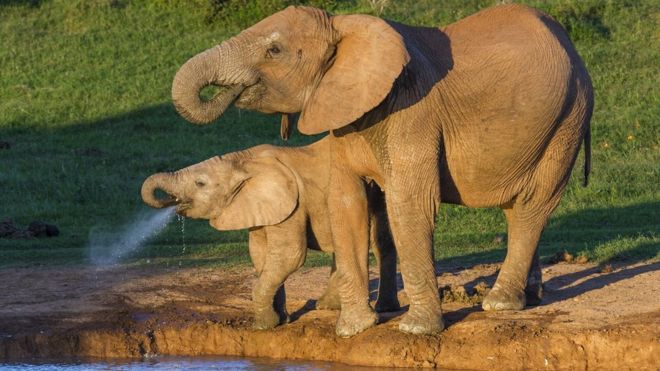
The newly tested genes may be an important key to the gentle giants’ surprisingly low rates of cancer.
Some 30 trillion cells make you, you. Along with your many microbes, this cellular orchestra keeps your body humming along—your heart hammering, your guts gurgling, and your muscles firing. As you grow older, your cells divide so new ones can replace the old. But with this turnover of cells, genetic errors are almost inevitable. And these mishaps often translate to cancer.
Statistically speaking then, bigger animals, which have more cells, should have greater occurrences of cancer. By that reasoning, elephants, with hundreds of times more cells than smaller mammals, should suffer from the disease at much higher rates. But that isn’t the case.
Humans and elephants both posses a tumor-suppressing gene called P53. Humans have one copy, elephants have 20 https://t.co/8X633Dqn5V
— National Geographic (@NatGeo) August 17, 2018
Now, a study in the journal Cell Reports offers new clues as to why—and the key may be a recently revived “zombie” gene.
“From an evolutionary biology perspective, it’s completely fascinating,” says Joshua Schiffman, a pediatric oncologist at the University of Utah who was not involved in the work. “This is a great start,” he says, cautioning that more tests are needed to confirm the find. “I think we’re just at the beginning.”
The Body-Size Conundrum

In 2015, Schiffman and his team published a paper detailing a critical discovery behind this mismatch of organism size and cancer rates—a quandary now known as Peto’s Paradox. They found that trunk-swinging creatures have extra copies of a tumor-suppressing gene called P53. Humans have one copy; elephants have 20.
As the cells in an animal’s body divide—human, elephant, or otherwise—this gene acts like a doctor in charge of genetic triage. “P53 can recognize DNA damage and then go, ‘OK what are our options?’” explains Amy Boddy, a biologist at the University of California, Santa Barbara, who was not involved in the work. Cells with minor issues can be repaired, but if they have too much damage, the cells become a cancer risk, so P53 orders them to be killed instead.

Study author Vincent Lynch, an evolutionary biologist the University of Chicago. “Elephants are weird,” he says. “Their cells just die if you give them DNA damage.” And Lynch, who led the team that independently verified elephants’ extra P53 genes, wanted to know why.
Cancer-Stopping Networks
The zombie gene is not the only one keeping cancer in check, Lynch cautions. “LIF6 is playing a small part in a broader process,” he says. Schiffman agrees, adding “there are almost certainly going to be other findings as well.” His team published one such discovery earlier this year focused on another set of genes that help repair broken elephant DNA rather than killing damaged cells.


The ultimate hope is that studying animals’ cancer defenses can aid in the development of cancer treatments for humans. “This took 59 million years of evolution,” Schiffman says of LIF6 evolution. “In my opinion, that’s 59 million years of research and development. That’s 59 million years of nature trying to figure out the best solution to avoiding cancer.”
By tapping into that well of knowledge, researchers could get a leg—or a trunk—up in the hunt for overcoming cancer.